How To Get Rid of Nutsedge in Your Maryland Lawn
When it comes to your lawn, there are some things you prefer to see and others you don’t.
You like a nice thick stand of green grass that is even in tone and consistent in texture.
You don’t want to see weird, off-color, leggy patches that don’t match the rest of the grass. Those are weeds, and some of them are amazing at rooting themselves in your lawn and staying awhile, learning how to survive in all conditions and slowly taking over your regular grass.
One particularly strong Maryland weed is nutsedge.
And getting rid of nutsedge can be quite a challenge. Let’s learn more about this lawn invader and how you can keep it out of your yard.
A Closer Look at Nutsedge
As a grass-like weed, nutsedge is known to grow faster than your regular grass, meaning it’ll usually stand taller than your lawn. You’ll notice this a couple of days after mowing for sure, as nutsedge rises up.
Use This Lawn Weed ID Tool to Spot Weeds in Your Lawn
As a perennial weed with a massive reproduction system, nutsedge will come back year after year if you don’t get a handle on it. Like other weeds, they are persistent and aggressive by nature, stealing water and nutrients from your lawn at any chance they can get.
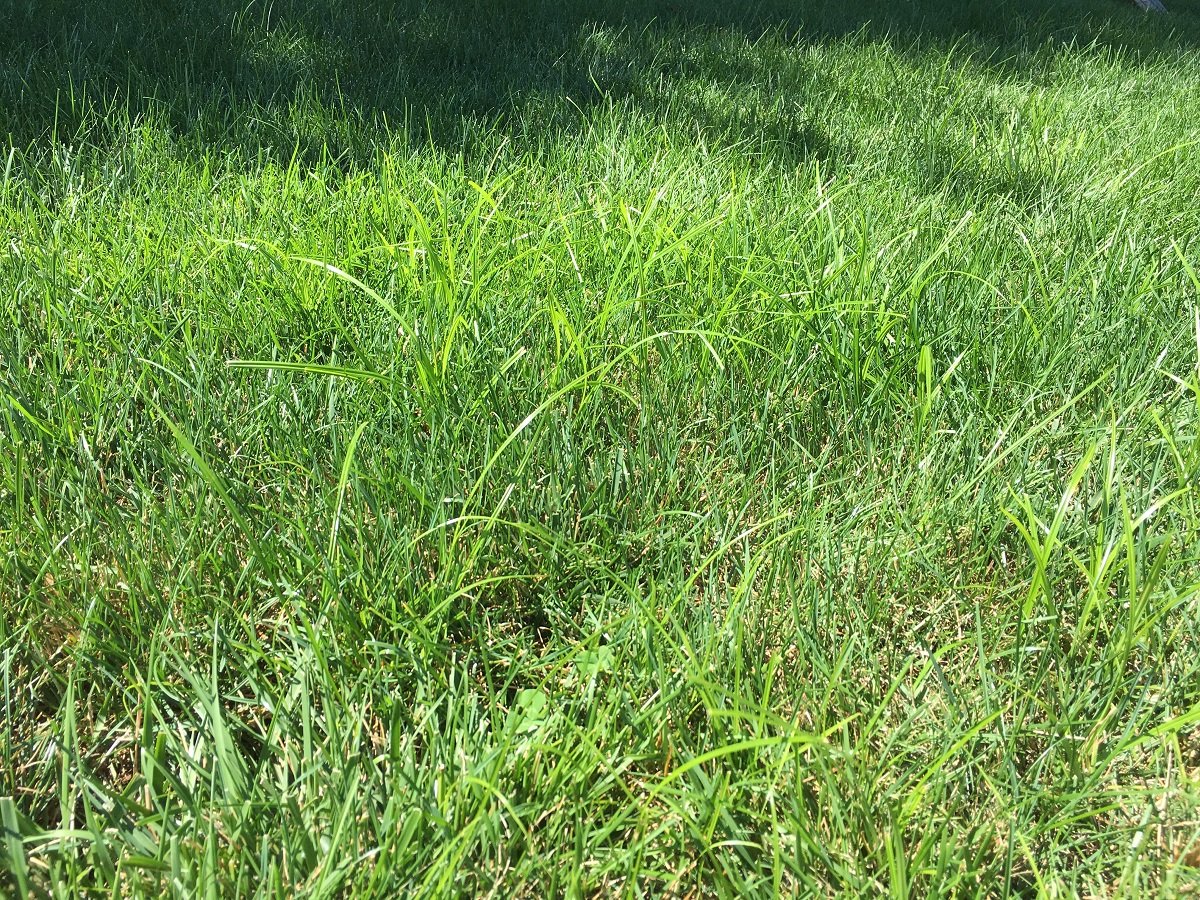 Getting rid of nutsedge, therefore, involves a multi-pronged approach, including proper identification, proper lawn care, and proper control strategies.
Getting rid of nutsedge, therefore, involves a multi-pronged approach, including proper identification, proper lawn care, and proper control strategies.
The Two Main Types of Nutsedge in Maryland
Learning how to get rid of nutsedge means learning about the different species that you can find in your lawn.
Yellow nutsedge and purple nutsedge commonly invade Maryland lawns.
They have some differences. Seed heads of yellow nutsedge are yellowish in color and the leaves are lighter green, while purple nutsedge seed heads are reddish-brown with darker green leaves. While purple nutsedge only grows to 16 inches tall, yellow nutsedge can grow up to 3 feet tall. Leaves are often longer than the stems of yellow nutsedge, but leaves are shorter than the stems of purple nutsedge.
What Makes Nutsedge A Tough Weed to Control?
Nutsedge grows from numerous underground tubers, so trying to pull it usually is only a temporary solution for getting rid of nutsedge. This is because when you pull it, you never get every part of the plant. The nodules that are smaller than a pea easily snap off the roots when you pull them, staying in the ground to regrow a new weed later.
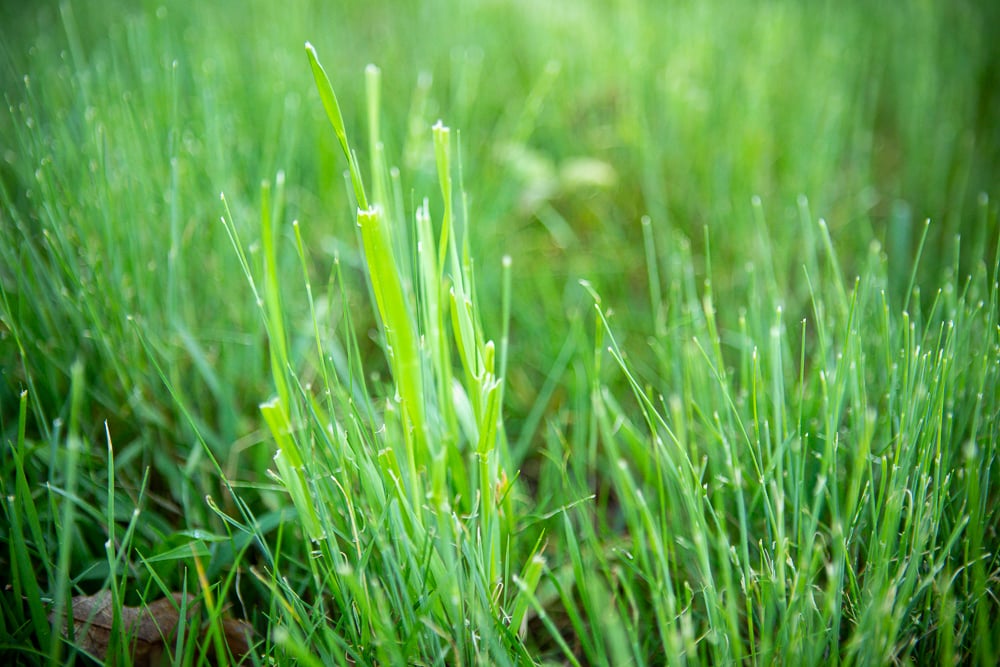 Once established, nutsedge can survive in most soil conditions. It doesn’t mind rocky soil that’s hard or damp soil. And it will take over if left unchecked. It’s one of the hardier weeds out there.
Once established, nutsedge can survive in most soil conditions. It doesn’t mind rocky soil that’s hard or damp soil. And it will take over if left unchecked. It’s one of the hardier weeds out there.
The Best Way to Get Rid of Nutsedge
Since nutsedge isn’t a broadleaf or grassy weed, common herbicides that are used to control other weeds in your lawn will not have much impact on nutsedge.
Luckily, there are new herbicide products coming out on a regular basis that are designed to treat sedges. While more expensive, these products can help suppress nutsedge growth each year to eventually eliminate them from your lawn.
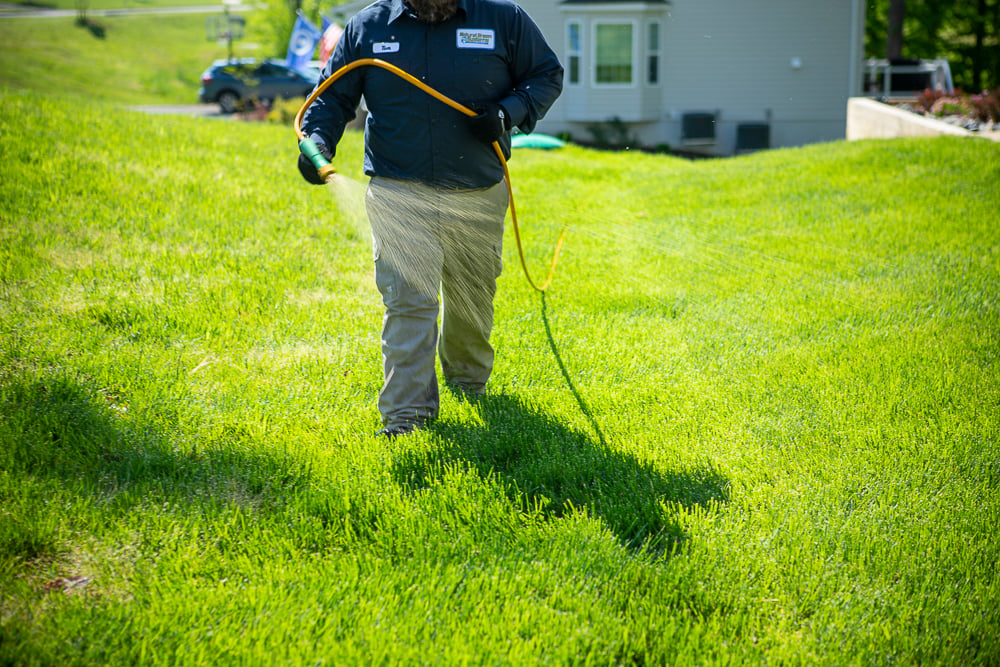 You want to make sure you’re working with a local lawn care professional who stays up-to-date on new products for getting rid of nutsedge so you can gain better control of it in your lawn. An expert who remains informed on these advancements in lawn care technology will do a better job eliminating all weeds in the long-run than one who uses the same old products that have no impact.
You want to make sure you’re working with a local lawn care professional who stays up-to-date on new products for getting rid of nutsedge so you can gain better control of it in your lawn. An expert who remains informed on these advancements in lawn care technology will do a better job eliminating all weeds in the long-run than one who uses the same old products that have no impact.
A Healthy Lawn Can Also Help You Get Rid of Nutsedge
In addition to proper weed control strategies that are targeted specifically to nutsedge, you want to make sure your lawn is in the best position to remain defensive against all weeds, including nutsedge.
Since nutsedge prefers warm, moist soil, you never want to over- or under-water. Let your lawn dry out before nightfall so it doesn’t stay wet for long periods of time to aid in getting rid of nutsedge. Early morning watering can help with this watering strategy.
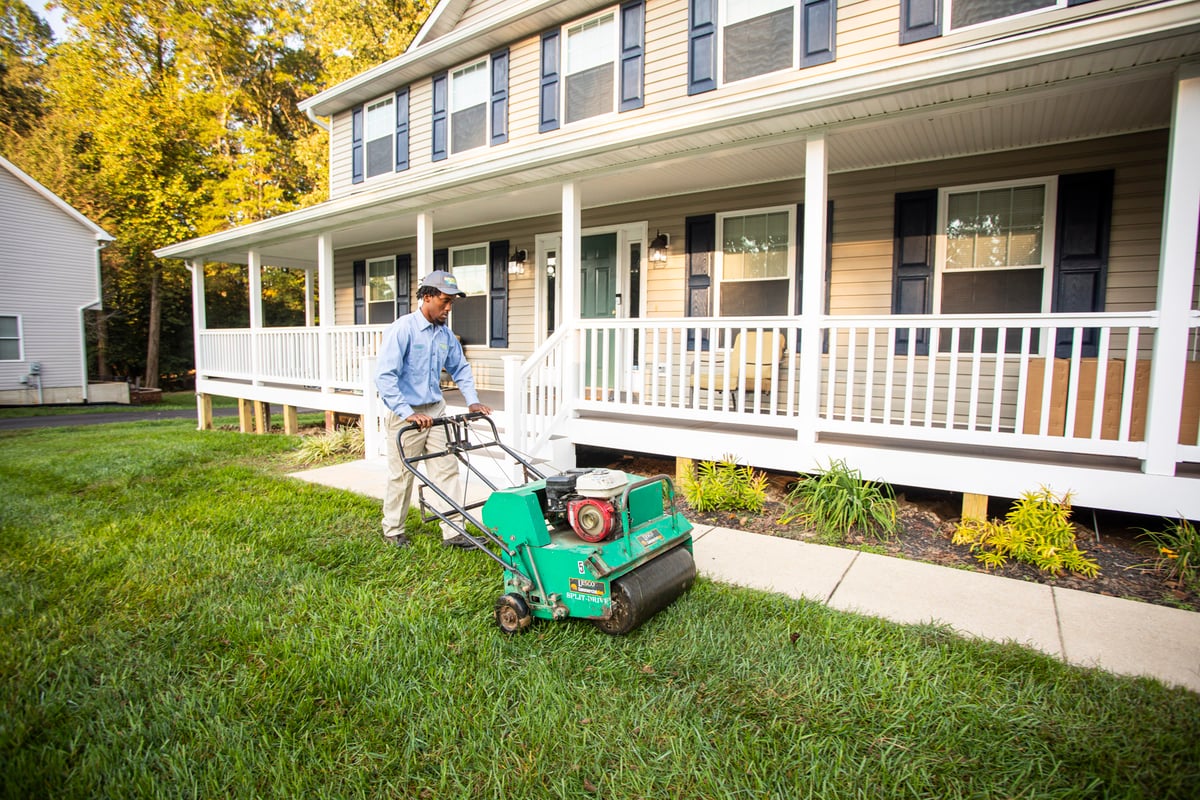 Great airflow is also helpful when drying out your lawn. To improve airflow, aerate your lawn annually and overseed it to fill in bare spots where weeds can sneak in.
Great airflow is also helpful when drying out your lawn. To improve airflow, aerate your lawn annually and overseed it to fill in bare spots where weeds can sneak in.
Proper fertilization based on a soil test will also ensure your lawn is getting the nutrients it needs to thrive. A nutrient-deficient lawn can draw in more weeds than just nutsedge.
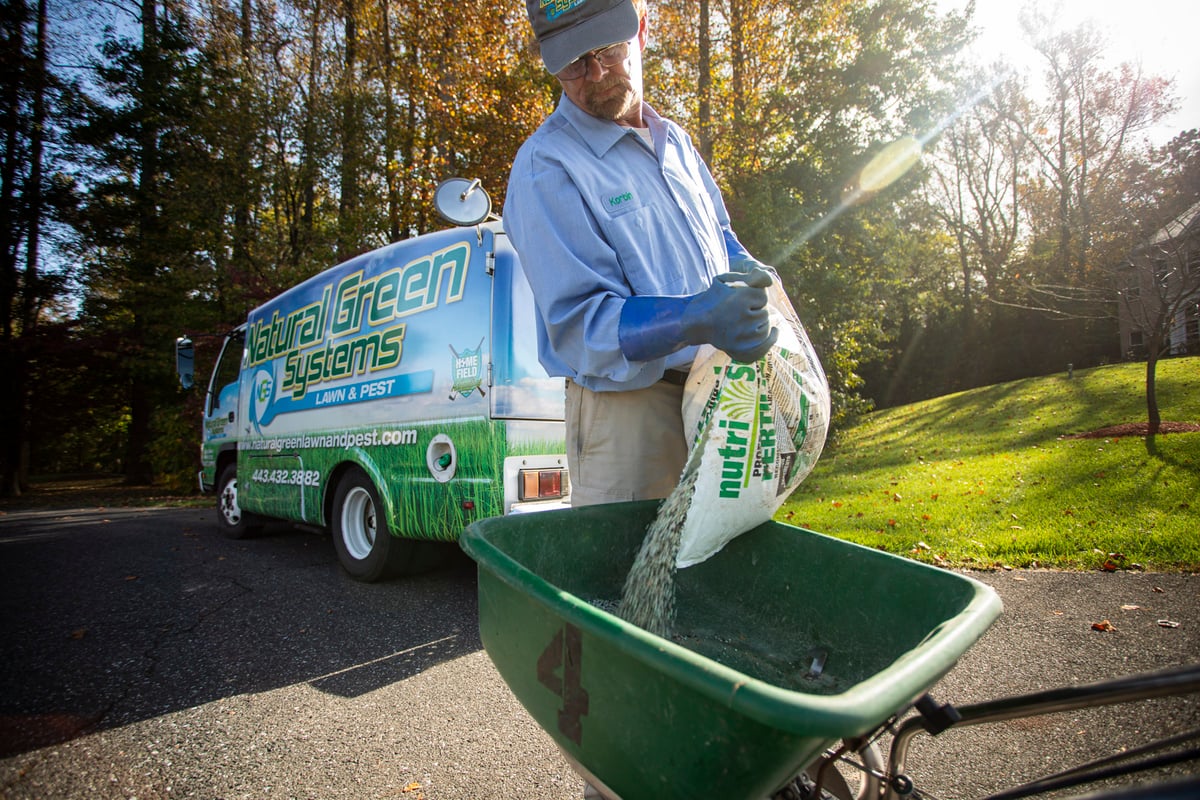 When mowing, remember not to cut your lawn too short or trim too much during a single mowing. This stresses your lawn. Keep your lawn at a 3.5- to 4-inch height.
When mowing, remember not to cut your lawn too short or trim too much during a single mowing. This stresses your lawn. Keep your lawn at a 3.5- to 4-inch height.
Stop Nutsedge in Your Maryland Lawn
Weeds are a nuisance. You know it. We know it.
But if you’re seeing areas that tend to grow taller than your lawn after mowing and appear different than your desirable grass, you might have nutsedge.
Proper lawn care and working with a lawn care service partner who knows how to handle difficult and tricky weeds like nutsedge can make a world of difference in your Maryland lawn’s appearance.
Not sure what to do? Give Natural Green a call. We tackle weeds on a daily basis, and nutsedge doesn’t phase us. We regularly try new herbicide technologies to ensure we find the best way to get rid of nutsedge and keep our customers happy and their lawns looking great.
Is nutsedge giving your lawn a bad rep? We’d love to help. Get started today with a free quote. Together, we’ll prepare a customized plan for your Central or Southern Maryland lawn so you can make an educated decision and banish weeds for good.
When it comes to your lawn, there are some things you prefer to see and others you don’t.
You like a nice thick stand of green grass that is even in tone and consistent in texture.
You don’t want to see weird, off-color, leggy patches that don’t match the rest of the grass. Those are weeds, and some of them are amazing at rooting themselves in your lawn and staying awhile, learning how to survive in all conditions and slowly taking over your regular grass.
One particularly strong Maryland weed is nutsedge.
And getting rid of nutsedge can be quite a challenge. Let’s learn more about this lawn invader and how you can keep it out of your yard.
A Closer Look at Nutsedge
As a grass-like weed, nutsedge is known to grow faster than your regular grass, meaning it’ll usually stand taller than your lawn. You’ll notice this a couple of days after mowing for sure, as nutsedge rises up.
Use This Lawn Weed ID Tool to Spot Weeds in Your Lawn
As a perennial weed with a massive reproduction system, nutsedge will come back year after year if you don’t get a handle on it. Like other weeds, they are persistent and aggressive by nature, stealing water and nutrients from your lawn at any chance they can get.
 Getting rid of nutsedge, therefore, involves a multi-pronged approach, including proper identification, proper lawn care, and proper control strategies.
Getting rid of nutsedge, therefore, involves a multi-pronged approach, including proper identification, proper lawn care, and proper control strategies.
The Two Main Types of Nutsedge in Maryland
Learning how to get rid of nutsedge means learning about the different species that you can find in your lawn.
Yellow nutsedge and purple nutsedge commonly invade Maryland lawns.
They have some differences. Seed heads of yellow nutsedge are yellowish in color and the leaves are lighter green, while purple nutsedge seed heads are reddish-brown with darker green leaves. While purple nutsedge only grows to 16 inches tall, yellow nutsedge can grow up to 3 feet tall. Leaves are often longer than the stems of yellow nutsedge, but leaves are shorter than the stems of purple nutsedge.
What Makes Nutsedge A Tough Weed to Control?
Nutsedge grows from numerous underground tubers, so trying to pull it usually is only a temporary solution for getting rid of nutsedge. This is because when you pull it, you never get every part of the plant. The nodules that are smaller than a pea easily snap off the roots when you pull them, staying in the ground to regrow a new weed later.
 Once established, nutsedge can survive in most soil conditions. It doesn’t mind rocky soil that’s hard or damp soil. And it will take over if left unchecked. It’s one of the hardier weeds out there.
Once established, nutsedge can survive in most soil conditions. It doesn’t mind rocky soil that’s hard or damp soil. And it will take over if left unchecked. It’s one of the hardier weeds out there.
The Best Way to Get Rid of Nutsedge
Since nutsedge isn’t a broadleaf or grassy weed, common herbicides that are used to control other weeds in your lawn will not have much impact on nutsedge.
Luckily, there are new herbicide products coming out on a regular basis that are designed to treat sedges. While more expensive, these products can help suppress nutsedge growth each year to eventually eliminate them from your lawn.
 You want to make sure you’re working with a local lawn care professional who stays up-to-date on new products for getting rid of nutsedge so you can gain better control of it in your lawn. An expert who remains informed on these advancements in lawn care technology will do a better job eliminating all weeds in the long-run than one who uses the same old products that have no impact.
You want to make sure you’re working with a local lawn care professional who stays up-to-date on new products for getting rid of nutsedge so you can gain better control of it in your lawn. An expert who remains informed on these advancements in lawn care technology will do a better job eliminating all weeds in the long-run than one who uses the same old products that have no impact.
A Healthy Lawn Can Also Help You Get Rid of Nutsedge
In addition to proper weed control strategies that are targeted specifically to nutsedge, you want to make sure your lawn is in the best position to remain defensive against all weeds, including nutsedge.
Since nutsedge prefers warm, moist soil, you never want to over- or under-water. Let your lawn dry out before nightfall so it doesn’t stay wet for long periods of time to aid in getting rid of nutsedge. Early morning watering can help with this watering strategy.
 Great airflow is also helpful when drying out your lawn. To improve airflow, aerate your lawn annually and overseed it to fill in bare spots where weeds can sneak in.
Great airflow is also helpful when drying out your lawn. To improve airflow, aerate your lawn annually and overseed it to fill in bare spots where weeds can sneak in.
Proper fertilization based on a soil test will also ensure your lawn is getting the nutrients it needs to thrive. A nutrient-deficient lawn can draw in more weeds than just nutsedge.
 When mowing, remember not to cut your lawn too short or trim too much during a single mowing. This stresses your lawn. Keep your lawn at a 3.5- to 4-inch height.
When mowing, remember not to cut your lawn too short or trim too much during a single mowing. This stresses your lawn. Keep your lawn at a 3.5- to 4-inch height.
Stop Nutsedge in Your Maryland Lawn
Weeds are a nuisance. You know it. We know it.
But if you’re seeing areas that tend to grow taller than your lawn after mowing and appear different than your desirable grass, you might have nutsedge.
Proper lawn care and working with a lawn care service partner who knows how to handle difficult and tricky weeds like nutsedge can make a world of difference in your Maryland lawn’s appearance.
Not sure what to do? Give Natural Green a call. We tackle weeds on a daily basis, and nutsedge doesn’t phase us. We regularly try new herbicide technologies to ensure we find the best way to get rid of nutsedge and keep our customers happy and their lawns looking great.
Is nutsedge giving your lawn a bad rep? We’d love to help. Get started today with a free quote. Together, we’ll prepare a customized plan for your Central or Southern Maryland lawn so you can make an educated decision and banish weeds for good.


